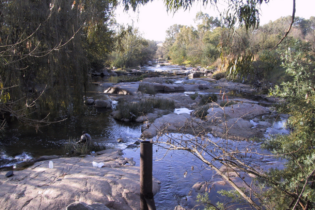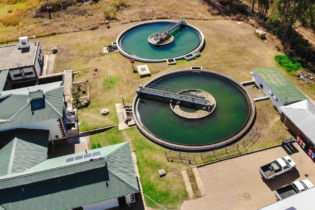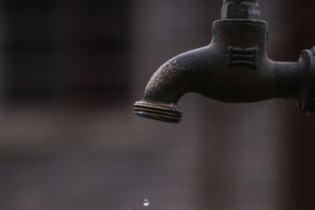The new Meulwater Water Treatment Works is situated in the Paarl Mountain Nature Reserve overlooking the Paarl valley.
The Drakenstein Municipality required a system that would not only perform its primary task of treating water, but would also be environmentally friendly and aesthetically pleasing to ensure that the sensitive ecology of the area was disturbed as little as possible. Bateman Africa, supported by its technology partner, Tenova Bateman Technologies, was the main contractor for the mechanical and electrical works, engineering and supplying all the equipment to suit the civil structures that were constructed under a separate contract. The treatment capacity of the works is 8 Mℓ/d and is upgradable to 15 Mℓ/d. The treatment process has been optimised to suit the relatively good raw quality of the mountain water. It has also been designed to allow future incorporation of an additional dissolved air flotation process within the existing filters should the water quality deteriorate. This is a possibility considering the relatively poor quality of the Berg River water, which will supplement the mountain water. The process is one of direct-filtration and comprises chemical dosing equipment, flocculation, rapid gravity filtration and disinfection. Facilities for recovering spent backwash water have also been included. “This system returns most of the spent wash water to the head of the works for retreatment. This substantially cuts water losses,” says Richard Miles, Bateman Africa project manager. He adds that the plant inlet control valve and the filter outlet control valves are electrically controlled and modulate according to the requirements set by the plant operator via the SCADA control system. The plant has a 200 kW backup generator system to ensure that there is continuous power to site. The Meulwater plant was originally proposed in 2001 after the Drakenstein Municipality identified the need to secure its own reliable water source. The project was given the go-ahead after a comprehensive environmental impact assessment (EIA), which was carried out between 2001 and 2006.When the Department of Environmental Affairs and Development Planning (DEADP) approved the project, a number of requirements were stipulated regarding the size and appearance of the plant, noise levels and the overall impact on the environment.
Miles states that as a result, the project had a number of unique challenges. “All mechanical and electrical equipment needed to comply with a set of very strict requirements and the fact that we were able to achieve what we did, in so doing contributing further to these ideals, is testament to our systems and teamwork.” “For example, almost anything that gets wet – such as pipework, valve internals and fasteners – is made of stainless steel, which also helps minimise maintenance requirements. We have also placed acoustic doors on the machine room, both internally and externally, to minimise the plant’s noise impact,” he discusses The DEADP requirements included instructions to limit the aesthetic impact of the structure by blending it into the natural environment. To achieve this, the plant was set as low into the ground as possible. The structure sits up to 5.5 m deep into the ground in places and has displaced 1 500 t of granite, almost half of which has been retained on site as cladding to the outside of the main buildings. Sections of the structure are built completely underground and are planted with fynbos. Landscaping of the site was done in such a way as to limit visibility of the structure from the valley below. Trees have been placed strategically to hide aspects of the structure and, where possible, berms have been created to make the structure more discreet.






